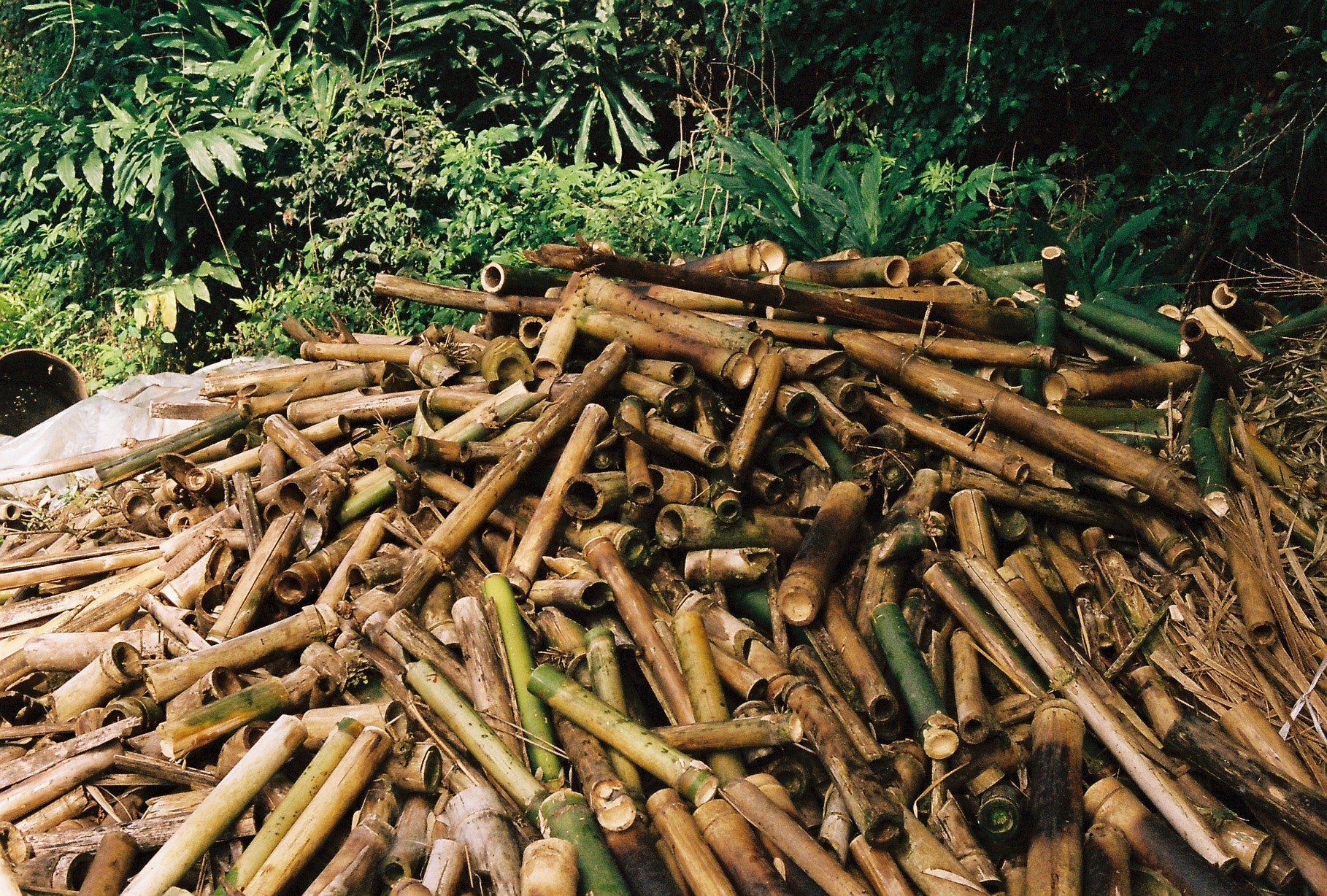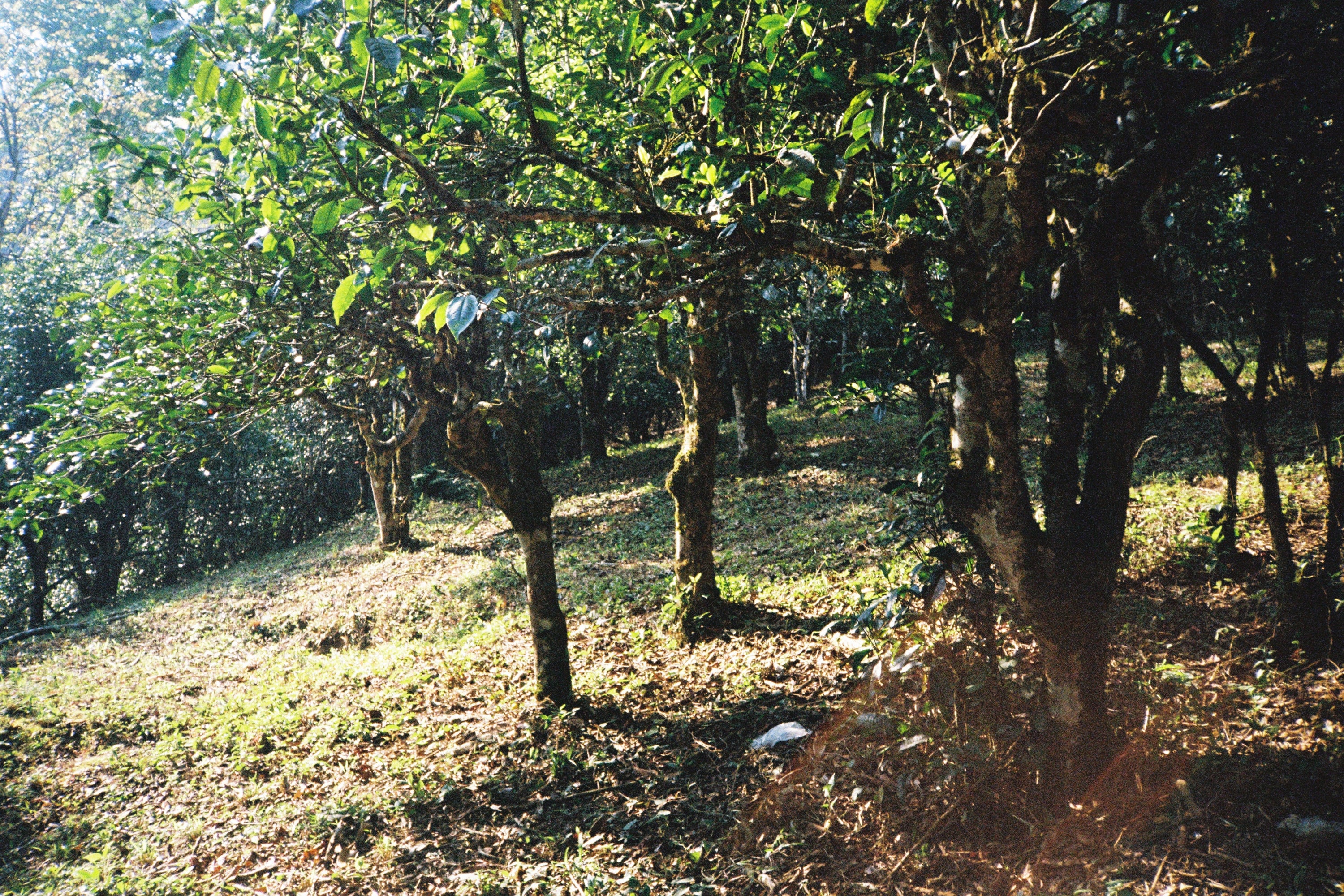
2023 Spring Collection
In some ways, this year's spring was more spring-like than most. It was the first time we were able to travel to Yunnan since 2019; finally being able to see old friends (and make some new ones), catch up on several years of changes, and ride part of the wave of post-pandemic energy resurgence.
We’re back, baby.
But it was also an incredibly dry season. January and February had less rainfall than usual, and there was none all through March, April, and most of May, leaving the soil (and tea plants) in many areas exceptionally parched.
For tea trees growing under the protective canopy of a forest, or in a pocket of mountainside with a creek or stream, dry weather is not as much of a problem. Camellia Sinensis trees that are old and healthy enough grow long tap roots so that they can access water tables deep underground. In a drought, the tea made from such trees tends to be concentrated and strong, undiluted by excess rainfall.
Conversely, for the rows and rows of small tea bushes growing in the full sun of a plantation, the lack of rain is a huge problem. Many tea plants didn’t bud at all, or if they did they sprouted in a stunted fan shape rather than a healthy branch. Sun damaged leaves were a common sight. Strong dry winds and exposed soil meant that many tea trees were covered in red dust.
Processing such dry growth into tea is difficult. If you don’t compensate for the lack of moisture when frying the tea, you can be prone to over-frying, leaving you with a final product that resembles green tea more than raw pu-erh.
The other effect of the drought is that there was significantly less volume of tea available across the board. Farmers who normally produce 10 kilos of old-tree material for the season were struggling to scrape together three. Everything was late to sprout and then suddenly the season was over after a few weeks.
There were also fewer buyers than previous years due to a slowed domestic economy; those remaining had to compete against other buyers to secure incredibly small supplies of tea. It was invaluable for us to have been there in person this year, as although we weren’t able to make all the teas we’d planned, what emerged from the chaos of the season is some very intense, high-quality teas, though in smaller amounts than we’d like.
Changes
Prior to the pandemic, our twice-yearly trip to Xishuangbanna always left us amazed at how much would change so quickly.
A four year break has been monumental. Thousands of kilometres of new roads, especially highways, have made access to a lot of tea producing areas significantly easier, faster, and safer for both producers and tea traders. In one example, what used to be a four hour drive up winding, single-lane dirt road is now made redundant by a new highway, cutting the trip to 10 minutes from the highway exit. Even up in the deep parts of the mountains, new road extensions have cut travel time dramatically, making it easier and faster to transport picked leaves back to town for processing.
However, some things never change.
Despite the exceptionally dry season, you can still overhear people in restaurants loudly proclaiming how they purchased several hundred kilograms of maocha from [insert famous place] despite that area only being capable of producing a mere 50 kilos in a good year, and even less during a drought.
The teas
This year the collection is relatively small both in number of different teas and amount of each, particularly for the higher end teas.
We did our best to put together as much volume as we could, but trees only make what they can make. Making, storing, and drinking tea each year is both a comforting and sobering reminder of the passage of time. Each cake is a little slice, never to be recreated.
One other advantage of being there in person this year was being able to obsess over some small details. An afternoon spent at different wrapper shops hunting for the best traditional mulberry fibre wrapping paper and tweaking printing profiles, was well worth it.
We’re very proud of the artwork this season, thanks to the hard work of long-time collaborators ERODUCTIONS and Jon Marshall, as well as a new commission from Atelier Decadence.
The food
A significant part of the love affair with Yunnan is not just the tea, but also the food.Some of our favourite restaurants are sadly no more, having closed down during the pandemic. But there were some dishes we dreamt about for four years that we were finally able to taste, as well as some new contenders for occupying the mind pantry. We just about cried upon the first taste of doujiang migan (rice noodles with soy broth) at breakfast.
The food goes well with the tea, of course; sour, strong, fragrant, and evocative. One of our new fixations; cold bean starch jelly, swimming in fragrant spicy oil, and a perfect balance of many delicious flavours all in one; greater than the sum of its parts.
Closing remarks
We always say it, but pu-erh tea is a long-term game.Working in agriculture is a multi-year endeavour, but pu-erh in particular lends itself to decades. In some ways, this year was tricky but it was also a standout season for many reasons. Some of the teas we drank were the best they’ve been in the seven years we’ve been going.
All in all, it was a great year to do what we do best - pile in on the teas we enjoy.


